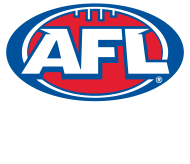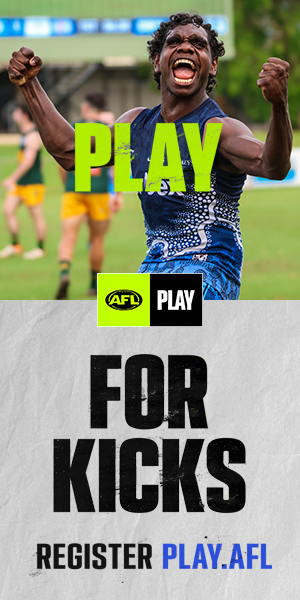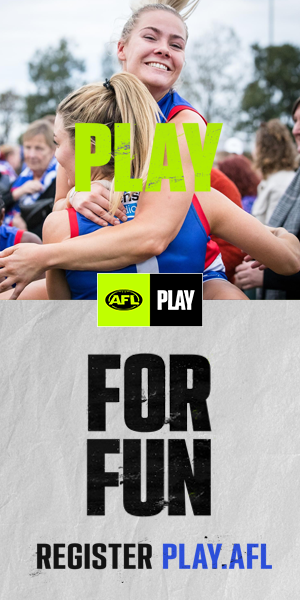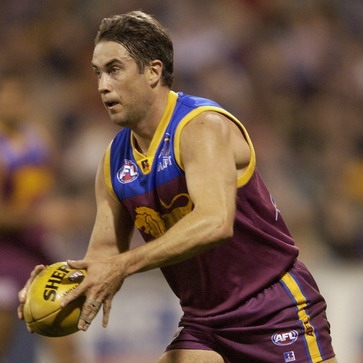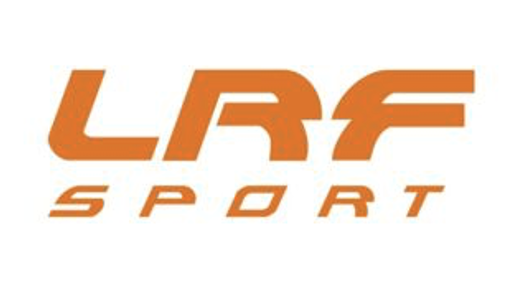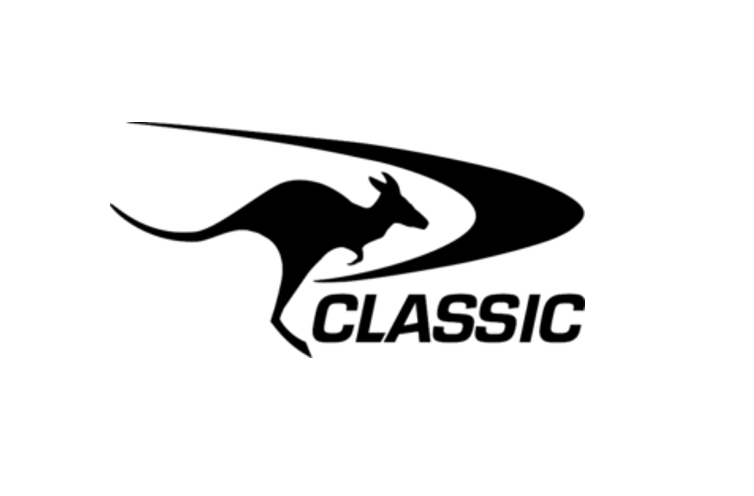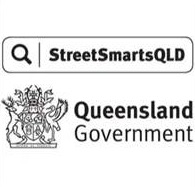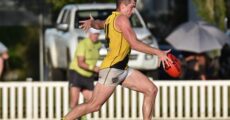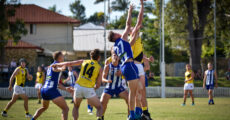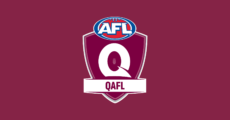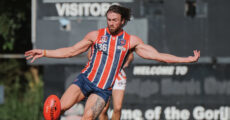Monday, 6 September, 2010
Marcus Ashcroft was elevated to ‘Legend’ status in the Queensland Football Hall of Fame tonight as the League inducted 10 new Hall of Fame members.
Ashcroft, the first Queenslander to play 300 AFL games during a glittering career with the Brisbane Lions and now Football Manager with the new Gold Coast AFL club, became the eighth Queensland Hall of Fame ‘Legend’.
He joins his long-time Lions captain Michael Voss and coach Leigh Matthews, Hawthorn champion Jason Dunstall, record-breaking umpire Tom McArthur, Queensland Team of the Century fullback Dick Verdon, founding administrator Arthur Collinson and 50-year football servant Harry O’Callaghan.
Brett Voss, a 170-game Brisbane and St.Kilda AFL player and younger brother of the current Lions coach, was among the 10 new inductees.
Other modern day inductees were Coorparoo, Redland and Mt.Gravatt rover Brad Jones, winner of the QAFL Grogan Medal in 1999 and runner-up no less than four times, and Morningside games record-holder and State captain Dean Edwards.
Also on hand to receive their induction tonight were Brian ‘Puddy’ Warlow, a Mayne star of the 1960s-70s, and Wave Bowers, a former Western Districts player, senior goal umpire and a member of the QAFL tribunal since 1973 – and still going.
Inducted in their absence were Michael Becker, a driving force for the code from the late 1880s, David Pie, a Windsor premiership player from the 1920s turned League administrator in the 1930s and ‘50s, Kevin Crathern, founding father of football in Cairns in the 1950s, Ralph Geshcke, a four-times Windsor premiership player 1947-51 and historic first premiership captain-coach with Wilston-Grange in 1955, and Spencer Thompson, a Sandgate champion of the 1950-60s.
The inclusion of 10 newcomers at the annual QAFL Grogan Medal dinner takes to 160 the total number of members in a Hall of Fame instituted in 2008 to recognize the enormous contribution to the code of players, coaches, officials, umpires and media representatives.
Full profiles of each of Hall of Fame inductees honoured at the 2010 Grogan Medal dinner are:-
Marcus Ashcroft (Legend)
Marcus Ashcroft was the first Queenslander to post 300 AFL games and remains the games record-holder of the Brisbane Bears/Lions after a magnificent career that spanned 15 years and 318 games, and culminated in the historic premiership hat-trick of 2001-02-03. Born in Melbourne but a Gold Coast product from age three, he came through the ranks at Surfers Paradise and Southport, and was a standout Queensland junior who made his AFL debut in 1989. Was a model of consistency and reliability, with 10 top 10 B&F finishes, plus awards for Most Professional Player (1997) and 1%er of the Year (1993). A State of Origin representative for Queensland, Queeensland/NT and the Allies, he was Bears/Lions vice-captain 1994-97. Posted a remarkable 170 consecutive games from 1992-2000 and ranks fifth among AFL players for most games without being reported. Originally a prolific ball-winning midfielder or goal-kicking half forward, he re-invented himself towards the latter part of his career as a close-checking defender, until he was forced into retirement after the 2003 grand final by a chronic hip problem that subsequently required a hip replacement. Spent 12 months as Club Development Manager with AFLQ club Broadbeach in 2004 before four years as Football Administration Manager at the Lions 2005-08. Went ‘home’ to join the fledgling Gold Coast AFL club in 2009, first as an assistant-coach and later as Football Manager ahead of their 2011 entry to the AFL. Was also an assistant-coach of the Dream Team under coach Mark Williams in the 2008 AFL Hall of Fame Tribute Match.
Michael Becker
One of the founding fathers of football in Queensland, he was born in South Melbourne, migrated to Brisbane as a 19 year old in 1887 and was one of Queensland’s best players in intercolonial matches against New South Wales and the visiting Melbourne F.C. in 1888. After Australian Football was to fade out in the 1890’s he was a driving force in its resurrection pre-World War 1. His leadership was instrumental in the code once again becoming a force in south-east Queensland. President of the QFL 1906-10, 1912-15, 1919, and life member of the QAFL, he was the father of fellow Hall of Famer and dual De Little medalist, Bill Becker, and continued to play occasionally in the years before the war. His successful business as a leather goods manufacturer saw him give significant financial and business support to the QFL, and he was the manufacturer of the Sandow footballs used in the first match of 1904 and right through that early era. Under his guidance, at various times in the years of reformation of the QFL (1904-1915), Australian Football gained substantial coverage in local print media. In 1914 he led the QFL’s successful negotiations for teams from the VFL, WAFL, SANFL and TFL to play a carnival in Brisbane and, in a major promotional coup and an enormous logistical challenge, he arranged for Collingwood, Cananore (major Tasmanian club), South Adelaide and Perth to participate in a football carnival in Brisbane. The chief objective of the carnival was the promotion of the Australian game in Queensland. The cost of the carnival was £3500. Most of this would be borne as follows: £400 Victoria, £400 South Australia, £400 Tasmania, £500 Western Australia, with the Australian Football Council donating £1480. Sadly, bigger world issues in Europe never allowed for this Becker vision to take root.
Wave Bowers
Over 60 years of involvement in the code locally began in 1948 playing for Ironside State School. Instrumental in the formation of one of West’s first junior teams that year. A glittering trial in 1954 saw him make his senior debut as a 16 year old. Went on to play well over 100 senior games for Western Districts over 9 years before a horrific leg injury incurred at Perry Park early in 1962 prematurely ended a great club career. Took on selection roles for the Bulldogs in 1962/3 before being approached by umpire’s boss Gerry Coyne. After some initial reluctance, the second part of an amazing engagement with code had begun. Was a junior and reserve grade field umpire from 1963 till 67. Umpired 1 senior QAFL game but his leg injury was too debilitating and a goal umpiring career continued his love of the game. Five QAFL Grand Finals in a row between 1968 and 72 stamped another great chapter in a truly wonderful football journey. Life membership of the Umpire’s Association was a testament to a behind the scenes operator, who with great family support, initiated social and fund raising activities that were the foundation of a strong umpiring group in Brisbane through that era. After retiring in 1973 commenced a 38-year (and still going) involvement on the QAFL tribunal. Involved in many high profile QAFL cases through this period. Was part of the tribunal team in the mid 80s that was controversially suspended by the QAFL for a week! Awarded the AFL Merit Award and an Australian Sports Medal. A truly remarkable contribution to the code that is not finished yet.
Kevin Crathern
A key figure in the history of Australian football in Cairns, he was originally from Melbourne and trialed with Richmond FC before joining the Royal Australian Navy and serving in World War II. While stationed in Cairns he played some service games of Australian football, and during this time he met Norma Brown, later settling in Cairns with his wife. With no Australian football in Cairns at that time, he played rugby league with Cairns clubs Brothers and Ivanhoes and represented Cairns in the Foley Shield. Assumed a huge place in the code’s history in Cairns when he was acknowledged as the founding father of Australian Football in the region after the inaugural meeting of the Cairns Australian Football League (CAFL) was held in August 1955. In 1956 he formed the South Cairns FC and the first games against North Cairns were held at the North Cairns Reserve. He went on to win two Webb Medals as the best and fairest player in the CAFL, the inaugural medal in 1956 while playing and coaching South Cairns, and the second in 1958 as captain coach of Centrals. An integral member of the CAFL from its inception, he formed a lasting friendship with the inaugural CAFL president Jack McCahon, and when McCahon stood down he took over the reins remaining as president for 18 years, continuing even during his time as Mayor of Cairns. As a hands-on leader, he was involved with every aspect of the code, umpiring the 1957 grand final and coaching many junior and school teams. He also coached senior and junior representative teams and in 1961 was the first Queensland recipient of the Australian National Football Council Merit Award. His most important legacy was the location and acquisition of the land on Mulgrave Road in Cairns that became Australian Football Park before he led the CAFL in efforts to clear the mangroves, level and grass the area in preparation for football. During this period he found time to form the Centrals FC before establishing the CAFL Social Club, fulfilling his passion to establish a home for football in Cairns and taking on the role of Secretary-Manager. At the completion of his term as Mayor he held positions on the CAFL, the CAFL Social Club, Cairns Junior Australian Football Association and North Queensland committees while also serving as President of the Centrals Aloomba. His involvement with Australian football in Cairns continued well into his later years, and the early 1980’s he identified an opportunity to secure a ground at Trinity Beach for Centrals. In retirement he spent many hours working with volunteers to clear the farmland and build the clubhouse on what was to become Crathern Park. Since 1970 the Crathern Medal has awarded to the player annually selected as the CAFL B&F. All of his work was completed in partnership with his wife Norma, and with her he was awarded life membership of the CAFL and CJAFL, among other football organisations.
Dean Edwards
A much-decorated Morningside stalwart, Dean Edwards was one of the standout performers in Queensland football from 1990-2003. He played in eight QAFL grand finals for four premierships, plus two B&F awards, a Grogan Medal and a Zane Taylor Medal. A nuggety small forward cum midfielder and occasional small forward in his latter years, he was a Brisbane-born Sherwood junior who joined the Panthers at U19 level in 1988. In his first eight years at Esplen Oval he played in eight consecutive grand finals – U19s in 1988, reserves in 1989 and the seniors six years in a row from 1990-95 for flags in 1991-93-94.He also played in a losing senior grand final in 1998 and collected a fourth senior flag in what was his last game in the 2003 grand final. He won the Grogan Medal in 1998 before being runner-up in 2000 and finishing third in 2001, won the Morningside B&F in 1998 and 2000 and twice was runner-up. He played five games for Queensland, captaining the State against ACT in 2003 after winning the Zane Taylor Medal as the Maroons’ best in the 1999 clash with the Victorian Metropolitan Football League. He was Morningside captain from 1998-2001, was the club’s games record-holder at 255 long after his retirement, and was made a Panthers Life Member in 2004.
Ralph Geshcke
A Windsor junior who went on to be a member of its highly successful senior team, winning four premierships between 1947-51. Revered as a tough and fearless but fair competitor, he represented Queensland on several occasions between 1946-54 and was captain and later coach of the Maroons. At 28 he shifted to the suburb of Wilston and in a major coup for Wilston-Grange he opted to play locally and was appointed captian-coach. Won his 5th QANFL flag when he led the Gorillas to a famous first premiership in 1955 after they were wooden spooners in 1954. Coached Grange again in 1956, ‘58, ‘59, ‘62, ‘63 and ’64, losing a thrilling 1959 Grand Final to Kedron in controversial circumstances. After retirement he was part of the highly popular radio program “Leach Motors Australian Football Forum” on which he was always prepared to give frank and often-controversial opinion.
Brad Jones
Brad Jones is a wonderfully loyal Queensland footballer whose extraordinary playing record has been over-ridden, perhaps unfairly, by his quiet, modest and unassuming personality. He should be more highly rated. After all, he played 266 seniors games and won seven B&F awards with three different clubs, won the 1999 Grogan Medal and with a few extra votes could have had an astonishing five. A Springwood junior, he played from U8s to Colts at Morningside before his QAFL debut as a 17-year-old in 1990. Thereafter he played seniors at Coorparoo from 1990-93, Mt.Gravatt 1994-99 and Redland 2000-05. A classy and high-possession rover, he represented Queensland in 1992-94-95-98, and in the 1994-95 off-season earned a trial with the Brisbane Bears, narrowly missing a senior list opportunity. He took B&F honors at Coorparoo in 1991, Mt.Gravatt in 1994-95-96-99 and Redland 2001-02, and completed an extraordinary list of 12 top three placings when he was runner-up in 1990-97-2005 and third in 1992-93. And that despite a knee reconstruction that wiped out virtually his entire 2000 season. But it was in the Grogan Medal that he could easily have achieved something unparalleled in senior football right across the country. Winner of the QAFL’s No.1 individual award in 1999, he finished second no less than four times in 1992-94-96-2002. He was runner-up by a vote than three times, and once missed out by two votes. Twice he finished second with 22 votes – enough to win it on most other occasions. And he finished three votes behind the leader in 1993. The only thing missing from his CV was a premiership – he was a member of Mt.Gravatt’s losing grand final sides in 1996-97. Married to former world triathlon champion and Olympic silver medalist Loretta Harrop, he retired temporarily in 2003 to travel the world with her but returned the same year to resume his QAFL career and climb to 8th on the League’s all-time games list before finally hanging up the boots aged 33 in 2004.
Bruce Pie
Born in Coburg, he arrived in Brisbane from Melbourne in 1923 after playing in the Victorian Amateurs for Old Caulfield Grammarians. A towering overhead mark, he played predominantly at centre half forward and in his first season with the Brisbane Football Club he was vice captain in their 1923 premiership. He also won the League B&F (Malemprie Cup) that year, captained Brisbane to the 1924 premiership and was Queensland vice-captain at the 1924 Hobart carnival. His clashes with ex-Essendon defender and Valleys captain Leo O’Connor were a highlight of Brisbane football in the 1920’s. Returned to Melbourne in 1925 and was recruited by Melbourne, but after a few senior games suffered an injury that ruled him out of the famous Melbourne team that went on to win the VFL premiership. Returning to Queensland in 1927, he played a few games for Valleys before further knee injuries led to a premature retirement. As President of the QANFL from 1935-38 he guided the League on principles from his highly successful career as a local businessman. He coached Queensland in 1936 before embarking on a political career. Returned to football administration in 1952 as chairman of the NAFC’s Queensland Advisory Board. An outstanding all-round athlete, who was also a standout boxer and in a golden era of Australian Boxing he was feted by many to turn professional but upheld his true blue amateur status by rejecting these offers. Father of David Pie, who represented Queensland in 1954, and grandson David jnr. who represented Queensland in 1980’s. Was further honoured when the Bruce Pie Cup was named after him.
Spencer Thompson
A Sandgate junior who took up the sport as a 10-year-old in rehabilitation after a serious car accident and went on to become one of the club’s all-time greats, noted for his exceptional strength and courage. Playing predominantly in the ruck, with occasional stint at centre half forward and centre half back, he totalled 264 games for the Hawks and represented Queensland five times. Beginning his career in a Sandgate-based schools competition, he enjoyed an early highlight playing in the curtain-raiser match to Fitzroy v Richmond at the Exhibition Ground under lights, when Kevin Murray’s performance left a lasting impression. Ex-Melbourne star Jack O’Brien, who coached Sandgate U18s, was another to have a big influence. Was chosen by captain-coach Norm Reidy for his senior debut for Sandgate in the first match of 1957 after the Hawks had won their first premiership in ’56, he was never dropped from the team and gained a reputation for his durability, missing only a handful of games through injury throughout a sterling 12-year senior career. After playing a key role in the ruck in Sandgate’s 1957 premiership, he earned his first Queensland jumper in 1958. His total of 264 games ranks 7th on the all-time QAFL games list played behind such luminaries as Syd Guildford, Owen Backwell, Danny Brennan, Don Smith, Wayne Stewart, Dick Verdon, and Des Hughes. A 10-year coaching stint at Sandgate High School helped establish it as one of Queensland’s football nurseries. He also coached the Hawks to a Colts premiership in 1963 before coaching the seniors in 1967-68 in which many regarded as a foundation of Sandgate’s dominance of the 1970’s. An initial director of Sandco, the co-operative that bought the land at Lemke Rd and then later sold it to the football club, he also found time to develop a career as Professor in Finance at the Queensland University of Technology and is a former Australian President of the Chartered Secretaries Association. Also a former Queensland President of the Chartered Practicing Accountants and a Life Member of the Hawks.
Brett Voss
Brett Voss emerged from the shadow of arguably Queensland’s greatest ever AFL player to forge an outstanding career in his own right. Younger brother of Brisbane Lions triple premiership skipper, Queensland Team of the Century captain and inaugural Queensland Hall of Fame legend Michael Voss, he played a total of 170 AFL games and kicked 67 goals for Brisbane and St.Kilda from 1997-2007, including eight finals. An ever-reliable running defender cum dangerous half forward, he was renowned for the trademark Voss courage. Like his illustrious brother he worked his way through the grades at Morningside and played his first senior game with the Panthers as a 17-year-old schoolboy in 1995. He was claimed by the then Brisbane Bears as a Queensland zone draft selection in ’95 and played 35 senior games in four years for the renamed Brisbane Lions from 1997-2000, including two finals in 2000. He was very much a required player under coach Leigh Matthews, but, seeking greater opportunity, he accepted an offer to join St.Kilda as the No.1 selection overall in the 2001 Pre-Season Draft and quickly became one of the Saints most reliable players. A member of the 2004 AFL Pre-Season Premiership side, he enjoyed his best period in the AFL when he finished 9th-5th-10th in the B&F in 2004-05-06. One game away from an AFL grand final in 2004 and ’06, he played 61 consecutive games from mid-2004 until the end of 2006, and ranked 10th on the all-time list of AFL games by a Queenslander at the time of his retirement at the end of 2007. Had a career-best 27 possessions against Sydney in 2002 and four goals against Melbourne in 2005.
Brian ‘Puddy’ Warlow
A Rockhampton-born Queenslander with over 40 years involvement in the code. A product of Ascot State School and Mayne juniors, he represented Queensland schoolboys in 1954-55, and was awarded the best and fairest medal at the national carnival in Adelaide in ’55. A schoolboy star who went on to be an integral part of the dominant Mayne senior club through its successful era in the 60’s where they played in seven consecutive QAFL Grand Finals. Played 179 games for the Tigers in an injury-interrupted career. Won Three premierships and played in five of the Grand Finals, missing two with some serious leg problems. Represented Queensland on 14 occasions, winning the Queensland B&F award at the 1965 ANFC carnival in Brisbane. After retiring in 1969 he coached Western Districts for a year in 1970. Returned to Mayne in 1971 after a mid season departure of the senior coach. Coached the Tigers again in 1972 before a decade of junior coaching at the then fledgling south side club of Springwood. One last stint at Mayne in 1982 saw him assist the Tigers as chairman of selectors as they landed their 15th premiership under Mick Nolan. Continued in that role in 1983 before another five years of junior coaching at Mayne.
